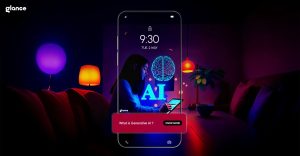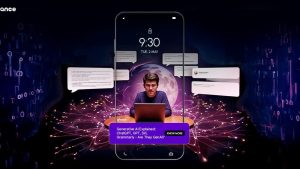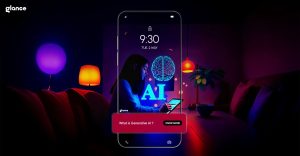From Small Screen to Big Screen Bliss
You’ve got that great video, those amazing photos from your trip, or maybe a presentation you want to share, all sitting on your phone or laptop. Wouldn’t it be great to see it on your big, beautiful Android TV screen? Good news – it’s easier than ever!
Most Android TVs (and Google TVs, which run on the Android TV OS) come with built-in features that let you wirelessly display content from your other devices. The two main ways to do this are Casting and Screen Mirroring. While they sound similar, they work differently. This android tv casting guide will explain both, show you the different screen mirror android tv methods, and help you choose the best way to share your content.
Casting vs. Screen Mirroring: What’s the Difference?
Understanding this distinction is key to choosing the right method:
- Casting (using Chromecast built-in):
- What it does: When you “cast” from an app (like YouTube, Netflix, Hotstar, JioCinema, Spotify), your phone essentially tells the TV what content to play directly from the internet. The TV takes over the streaming.
- Pros: Frees up your phone (you can use other apps, make calls, or even turn off the screen), saves phone battery, often provides better quality as the TV streams directly.
- Cons: Only works with apps that have the “Cast” icon integrated. Doesn’t show your phone’s entire screen or apps not designed for casting.
- Analogy: It’s like sending your friend a link to a YouTube video. They open and watch it on their device, independent of yours.
- Screen Mirroring (or Screen Casting/Smart View/Wireless Display):
- What it does: This duplicates exactly what’s on your phone, tablet, or computer screen onto the TV in real-time. If you swipe on your phone, you see it on the TV.
- Pros: Shows anything on your device screen (photos, websites, documents, apps without a Cast button, presentations). Good for demos or sharing content not available in specific apps.
- Cons: Uses more phone battery, your phone screen needs to stay on and active, can sometimes have slight lag, notifications from your phone will appear on the TV.
- Analogy: It’s like holding up a mirror to your phone screen for everyone to see.
Which to use?
- For streaming video or music from apps like YouTube, Netflix, Hotstar, Spotify, etc. –> Casting is usually better.
- For showing photos stored on your phone, Browse websites, giving presentations, or using apps without a Cast button –> Screen Mirroring is the way to go.
Method 1: Casting with Chromecast built-in (The Easiest Way for Apps)
Most Android TVs have Chromecast built-in, making this super simple.
- Connect to Wi-Fi: Ensure your phone/tablet and your Android TV are connected to the same Wi-Fi network. This is crucial.
- Open a Cast-Enabled App: Launch an app that supports casting (e.g., YouTube, Netflix, Hotstar, Gaana, Spotify, Google Photos).
- Find the Cast Icon: Look for the Cast icon within the app. It usually looks like a rectangle with Wi-Fi waves in the corner ( ). It might be near the top or bottom of the app, or appear when you start playing content.
- Select Your TV: Tap the Cast icon. A list of available devices on your network will appear. Select the name of your Android TV.
- Cast Your Content: The Cast icon will change color (often becoming solid) to indicate it’s connected. Now, when you play a video or music in the app, it will play on your TV instead of your phone. You can use your phone to control playback (pause, play, volume).
- Stop Casting: Tap the Cast icon again within the app and choose “Disconnect” or “Stop Casting.”
Method 2: Screen Mirroring from Your Android Phone
This mirrors your entire phone screen. The exact steps and names might vary slightly depending on your phone brand (e.g., Samsung calls it “Smart View,” others might call it “Screen Cast,” “Wireless Projection,” or just “Cast”).
- Connect to Wi-Fi: Make sure your phone and Android TV are on the same Wi-Fi network.
- Find the Mirroring Option:
- Quick Settings: Swipe down from the top of your phone screen to open the Quick Settings panel. Look for an option labelled “Screen Cast,” “Cast,” “Smart View,” “Wireless Display,” or similar. You might need to swipe sideways or edit the Quick Settings panel to find it.
- Settings Menu: Alternatively, go to your phone’s Settings app and look under “Connected devices,” “Connections,” “Network & Internet,” or a similar section for a “Cast” or “Screen Mirroring” option.
- Google Home App: Open the Google Home app, select your Android TV device from the list, and tap the “Cast my screen” button at the bottom.
- Select Your TV: Once you tap the mirroring option, your phone will search for compatible devices. Select your Android TV from the list.
- Start Mirroring: You might see a prompt asking for permission to start casting/recording. Tap “Start now” or “Allow.” Your phone screen should now appear on your TV.
- Stop Mirroring: Go back to the same Quick Settings tile or Settings menu option (or the Google Home app) and tap your TV’s name again, then select “Disconnect.”
Method 3: Casting/Mirroring from Your Laptop (Chrome Browser)
You can easily share a browser tab or your entire desktop from a laptop using Google Chrome.
- Connect to Wi-Fi: Ensure your laptop and Android TV are on the same Wi-Fi network.
- Open Chrome: Launch the Google Chrome browser on your laptop.
- Click the Cast Menu: Click the three vertical dots (⋮) in the top-right corner of Chrome.
- Select “Cast…”: Choose “Cast…” from the dropdown menu.
- Choose Your Source: A small “Cast tab” window will appear. Click the “Sources” dropdown menu at the bottom. You can choose:
- Cast tab: Mirrors only the current browser tab.
- Cast screen: Mirrors your entire laptop desktop.
- Cast file: Lets you cast local audio or video files.
- Select Your TV: Click the name of your Android TV from the list of available devices.
- Start Sharing: Your selected source (tab or screen) will appear on the TV.
- Stop Casting: Click the active Cast icon (usually blue) in your Chrome toolbar (near the address bar) and select your TV again, or simply close the casted tab/window if casting a tab.
Troubleshooting Common Issues
Having trouble? Here are quick fixes:
- Check Wi-Fi: This is the most common issue. Double-check that both your casting device (phone/laptop) and your Android TV are connected to the exact same Wi-Fi network. If you have a dual-band router (2.4 GHz and 5 GHz), try connecting both devices to the same band (usually 5GHz is better if range isn’t an issue).
- Restart Devices: A simple restart often fixes temporary glitches. Reboot your phone/laptop, your Android TV, AND your Wi-Fi router (unplug it for a minute, then plug it back in).
- Check Chromecast built-in App (on TV): Sometimes the underlying service needs a nudge. On your TV, go to Settings > Apps > See all apps > (Show system apps if needed) > find “Chromecast built-in” (or similar like “Google Cast Receiver”). Ensure it’s enabled. You can also try clearing its cache/data and restarting the TV.
- Updates: Make sure your phone’s operating system, the apps you’re trying to cast from, and your Android TV’s system software are all up-to-date.
- Device Visibility: Ensure your TV is discoverable on the network. Sometimes router settings like “AP Isolation” can prevent devices from seeing each other; check your router’s manual if problems persist.
Glance: Different Ways to Interact with Your TV Screen
Casting and screen mirroring are fantastic ways to actively push content from your personal devices onto your Android TV for shared viewing or a bigger display. It puts you in control of bringing specific content to the screen.
Understanding these interaction methods is part of grasping the full potential of your smart TV. At Glance, we explore different ways to make your TV screen more engaging. While you use casting or mirroring to actively show content, Glance TV (a smart surface for connected TVs) takes a different approach – using the TV’s idle time to proactively bring personalized, ambient content discovery directly to the screen, powered by AI. It’s about making the screen useful and interesting even when you aren’t actively pushing content to it. Both casting/mirroring and ambient experiences like Glance TV leverage the capabilities of the Android TV platform in unique ways.
For more tips and tricks related to casting and the Chromecast ecosystem, explore Glance’s guide here:
Conclusion: Enjoy the Big Picture!
Whether you’re casting a movie from Hotstar, mirroring your photo gallery, or sharing a presentation from your laptop, your Android TV offers versatile ways to break free from the small screen. By understanding the difference between casting and the various screen mirror android tv methods, and knowing the basic troubleshooting steps, you can easily share and enjoy your content on the best display in your house. So go ahead, cast away, and enjoy the big picture!




